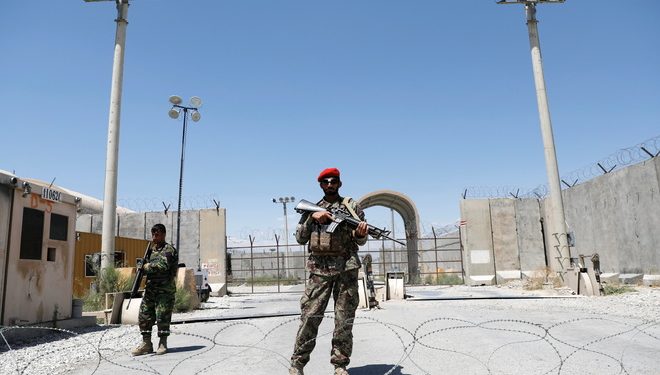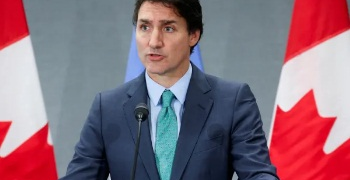The departure of American troops July 2 from the Bagram Airfield in Afghanistan, the linchpin of the US-led war against terrorists operating from the country for nearly two decades, marks a new chapter in Afghanistan’s history. Since the US took control of the field following the 9/11 twin tower attacks, the two-mile-long runway became the jumping-off point for military operations throughout Afghanistan. It turned into a small city complete with shops, gyms and classrooms for the thousands of service members and contractors who worked at the base and its facilities. The US has reasons and domestic compulsions for its total military pullout coinciding with the 9/11 anniversary this year as maintaining over 150,000 troops for years has been a drain on its exchequer estimated to be over $2.26 trillion. But, the hurry shown by the Biden administration in letting the Taliban have a field day in Afghanistan after its withdrawal causes grave concern over peace and stability in the region. The US may be questioned about its sincerity in rooting out international terrorism. On the other hand, those who doubt may, in turn, be questioned whether Afghanistan is the sole breeding ground for terror networks.
For nearly 18 months, American diplomats negotiated a largely secret deal with the Taliban, completely bypassing the Afghan government. The immediate price that had to be paid for brokering the deal was freeing thousands of prisoners from Afghan jails and according legitimacy to the Taliban who are determined to re-establish their Islamic Emirate through military conquest. Peace overtures with the Taliban had been made earlier by former Afghan President Hamid Karzai soon after the Taliban regime was overthrown in late 2001. What prompted the initiatives was the assumption that the Taliban had learnt their lessons from the failures of their so-called emirate in the 1990s and their near total international isolation. Pakistan also played a role in helping the process of negotiations with the Taliban by advancing the argument that the latter lacked experience in politics, governance, and diplomacy in the 1990s and that by now they have realised their past mistakes.
The intentions of the USA, other than safeguarding its own interests, are far from clear. In the February 2020 Doha deal between Washington and the Taliban, no efforts were made to find a peaceful resolution to the war in Afghanistan or even ending the war on terrorism. Using the Doha deal and the US pressure on the Afghan government, the Taliban were able to secure the release of 5,000 of their fighters, arrested or captured by the Afghan forces while planning attacks or fighting along frontlines. They are now demanding the release of more imprisoned fighters.
According to the Long War Journal (a project of the US-based Foundation for the Defence of Democracies), the Taliban are in control of 76 of Afghanistan’s 325 districts, i.e. 19 per cent, while the government forces are in commanding position in 127 or 32 per cent of the districts. The trouble is authority over the remaining 49 per cent is contested. Experts say there is no doubt the Taliban will win any battle they have to fight to wrest control from the Afghan government. Perhaps, this is the reason why President Ashraf Ghani has held out the olive branch to the Taliban offering even to step down to facilitate elections to form a government in which the Taliban can participate. But, the problem is the Taliban do not believe in any democratic model from the ‘West,’ which they regard as un-Islamic.
In such a scenario, Pakistan emerges as the biggest beneficiary among Afghanistan’s neighbours. It is an open secret how Taliban fighters and their leaders have been getting shelter from Pakistan and the Lashkar-e-Taiba (LeT) and Jaish-e-Mohammad (JeM) are known to be working in close collaboration with the Taliban in Afghanistan. A change of guard in Afghanistan would probably work to Pakistan’s advantage. The LeT, JeM and Tehrik-e Taliban will, without doubt, get support from the Taliban to carry on cross-border terrorist activities in India. The recent drone attacks on the Jammu Air Force Station and several forays into Jammu and Kashmir, violating India’s air space in the past few days do not augur well for India’s fight against terrorism in the country’s north-western frontier.
India has a lot to learn from the US withdrawal from Afghanistan. Maintaining a contingent of only 150,000 personnel could make the US feel drained in 20 years. Compare that to the number of military personnel deployed by India in Jammu and Kashmir. The period of enhanced Indian military presence in this region of the country dates back to the mid-1980s. The abrogation of Article 370 brought in a huge number of military and para-military forces to Kashmir. The drain on the Indian exchequer can well be imagined. It would be mind boggling for Indian citizens if the government of India would release actual figures of what has been spent in J&K since the beginning of the separatist movement and especially after Article 370 was removed.







































